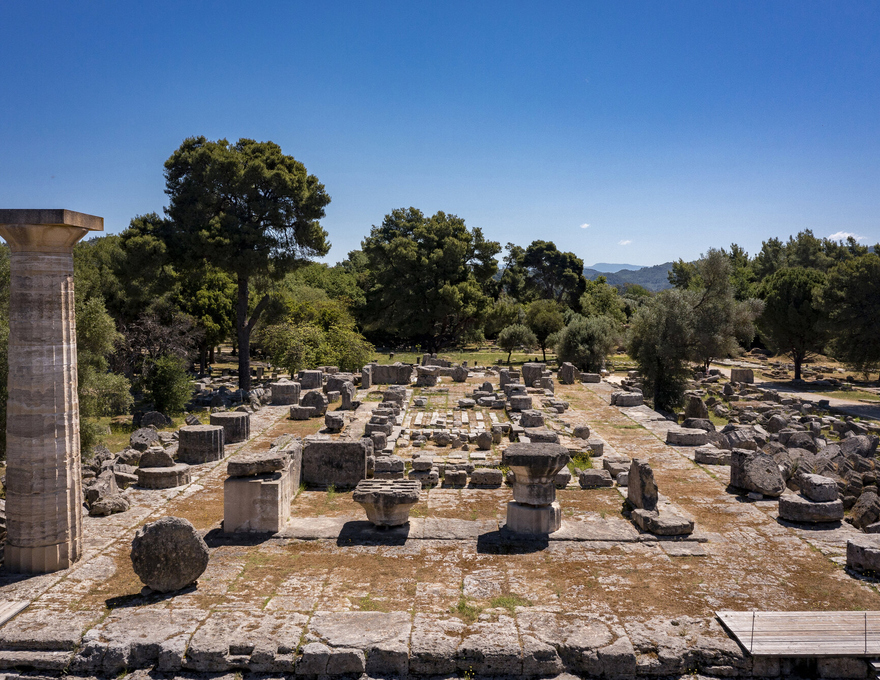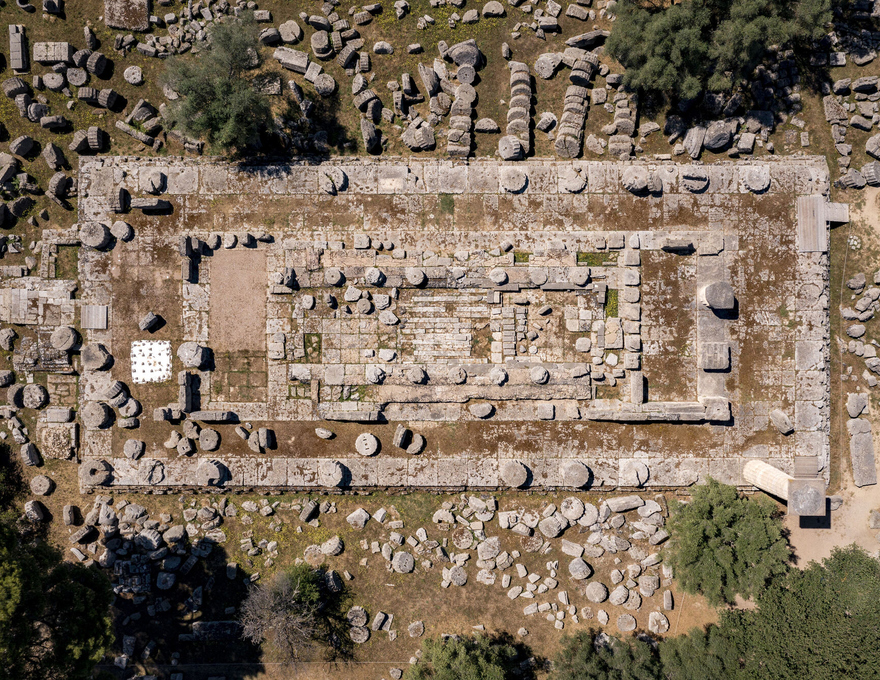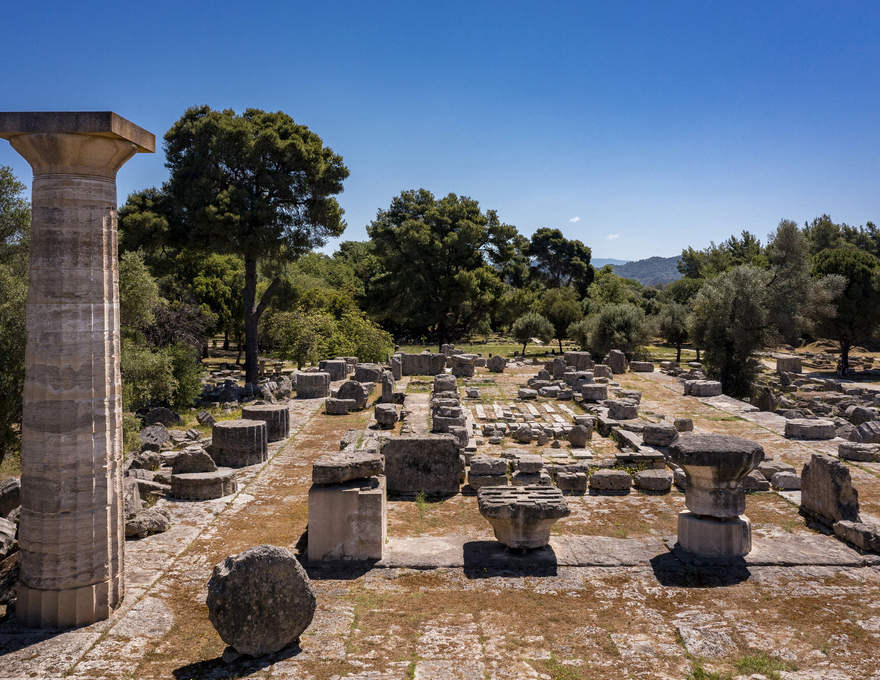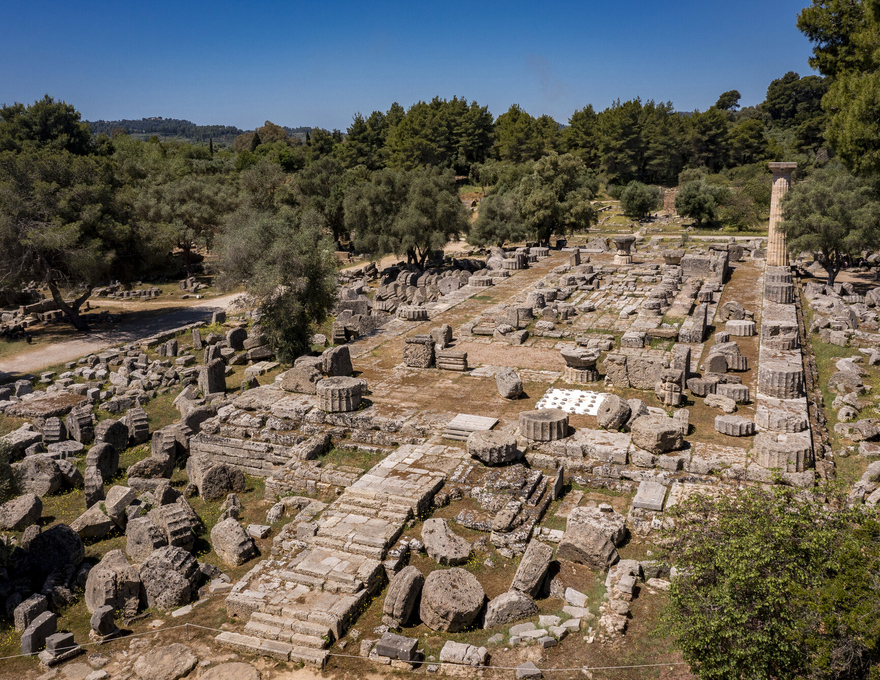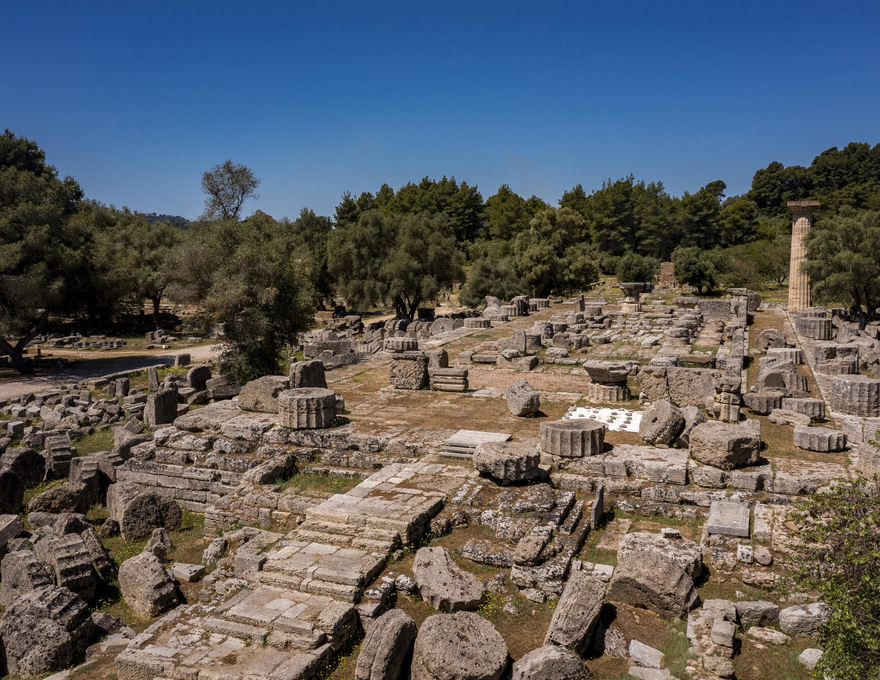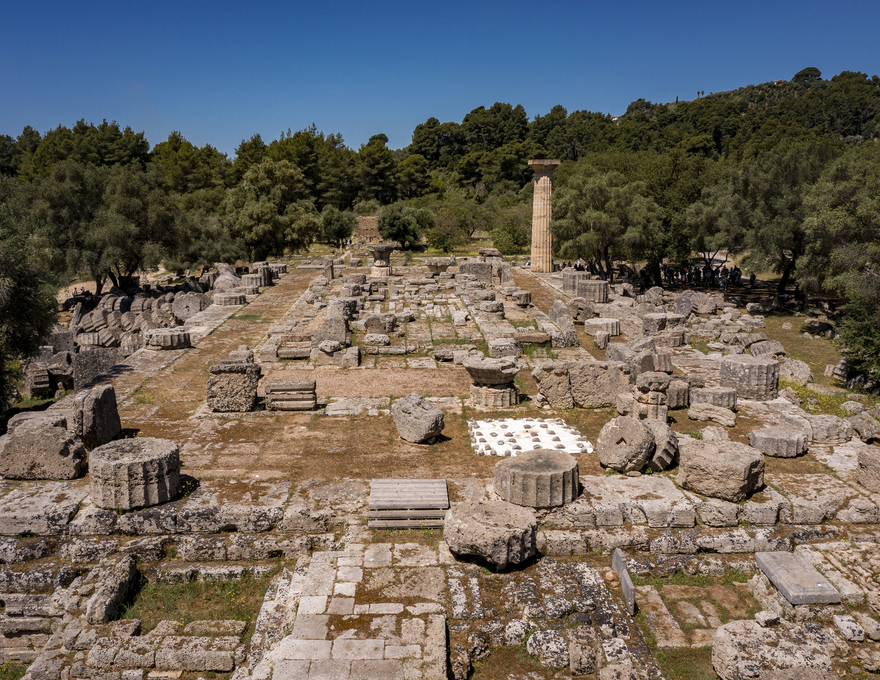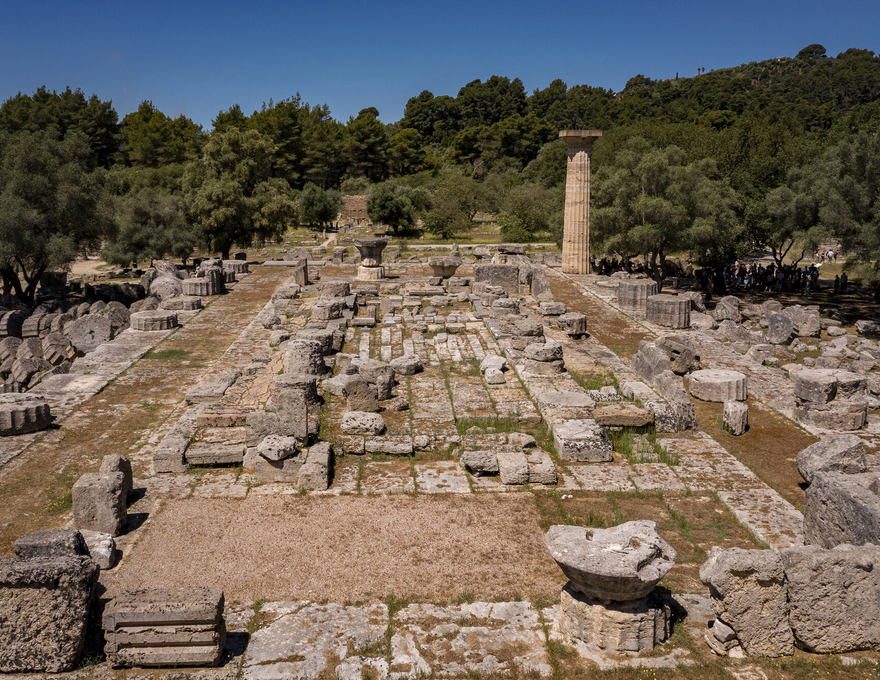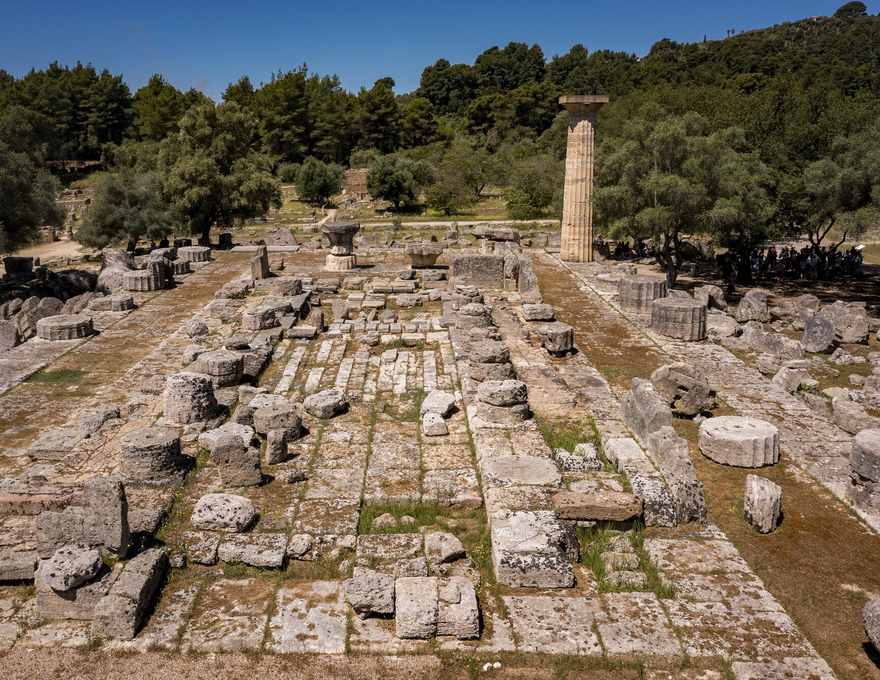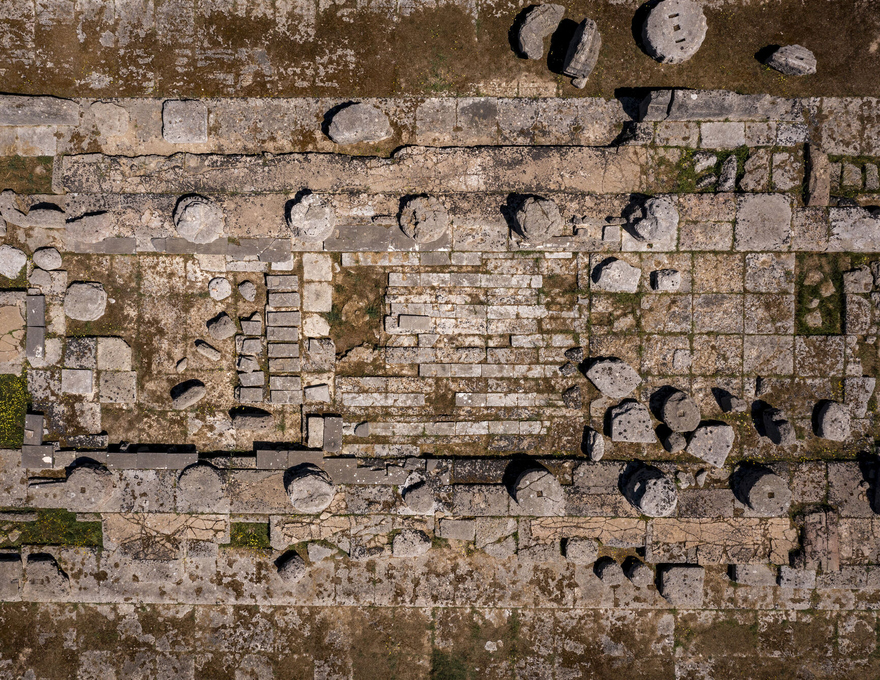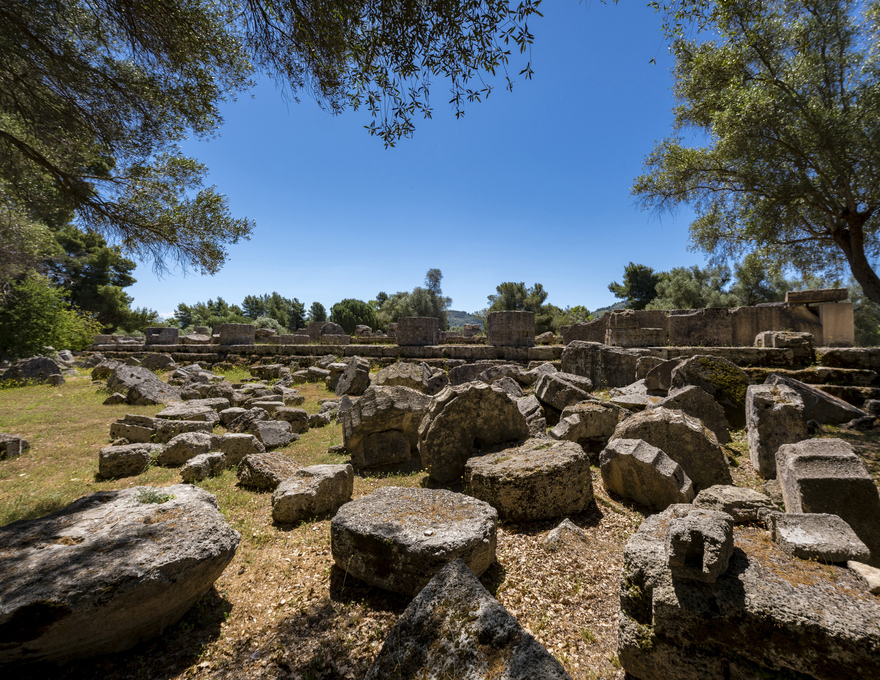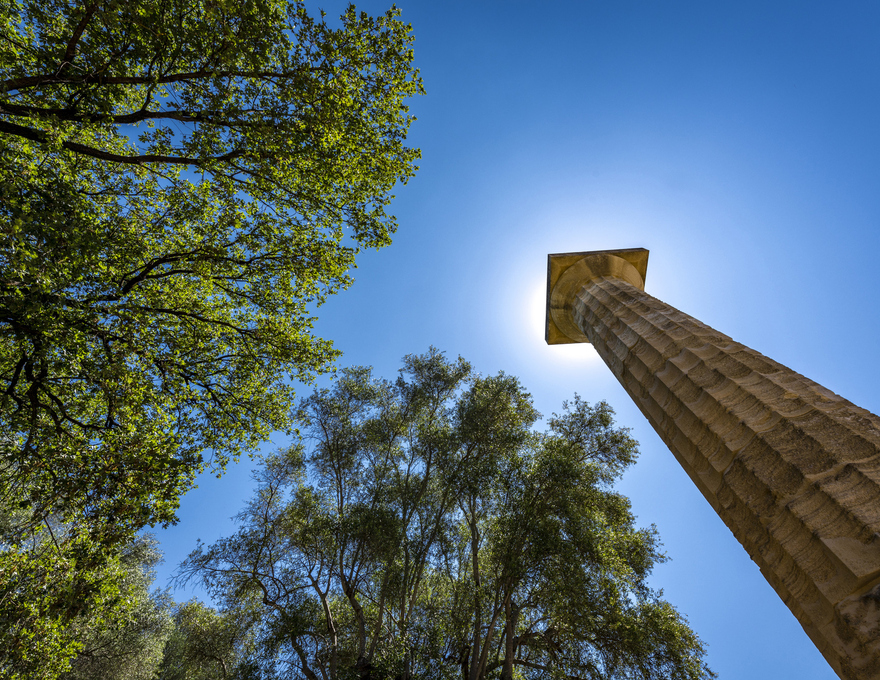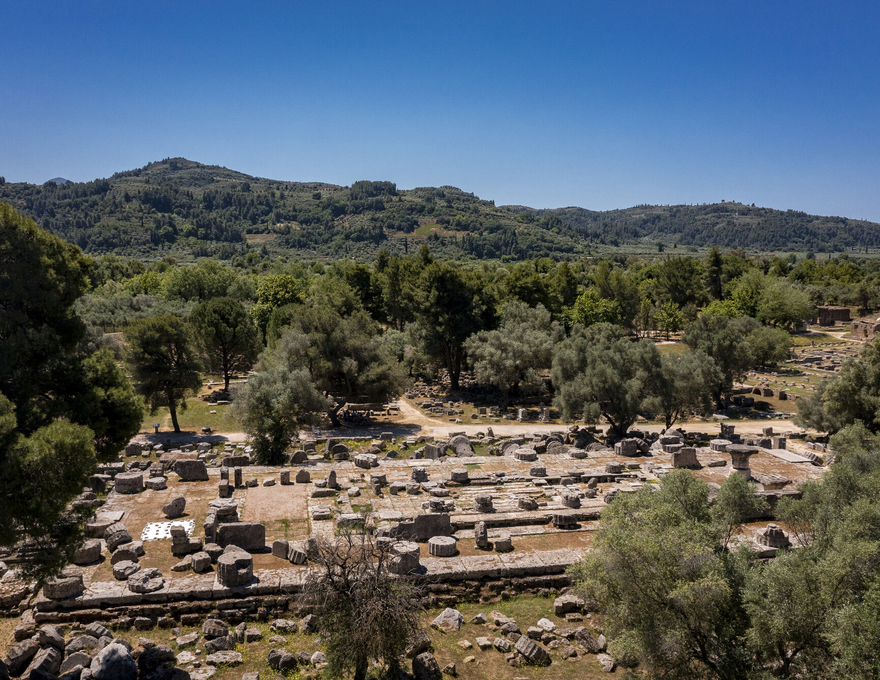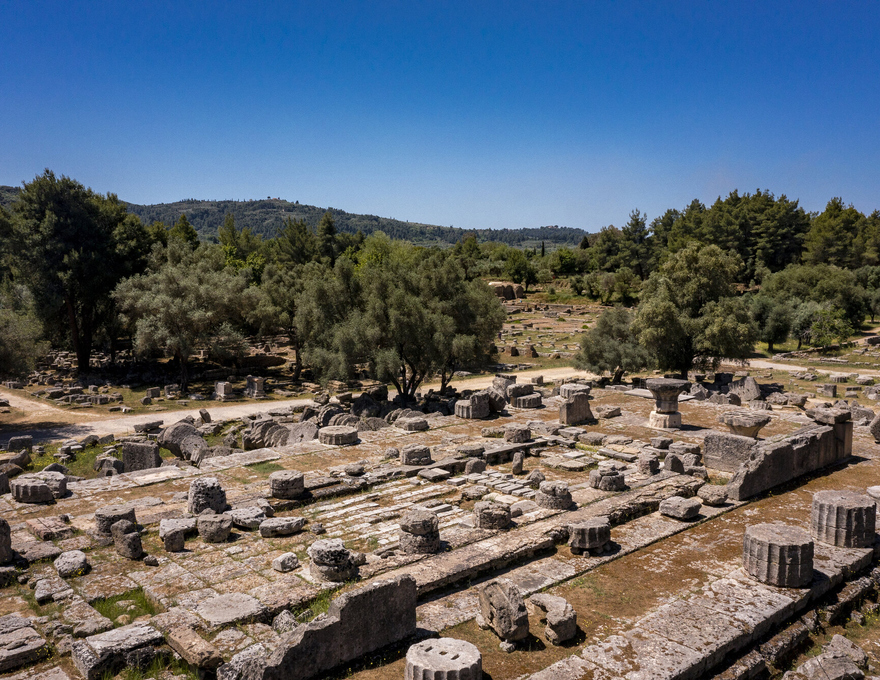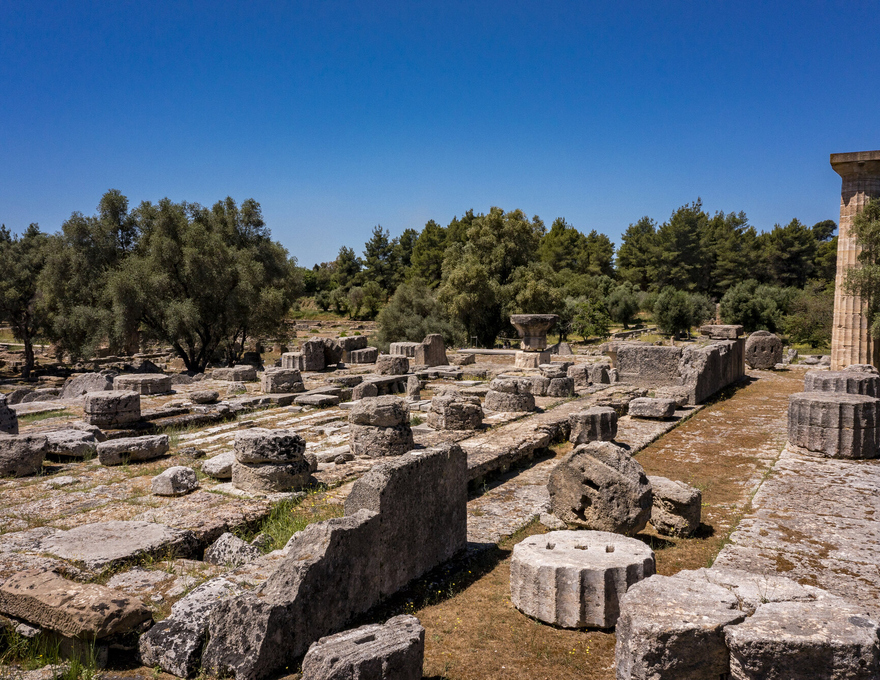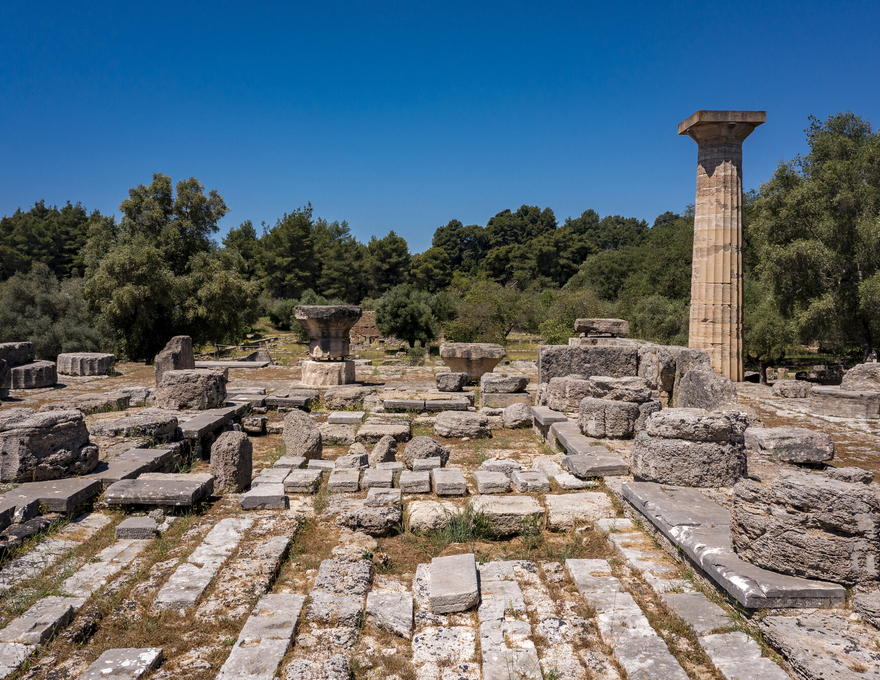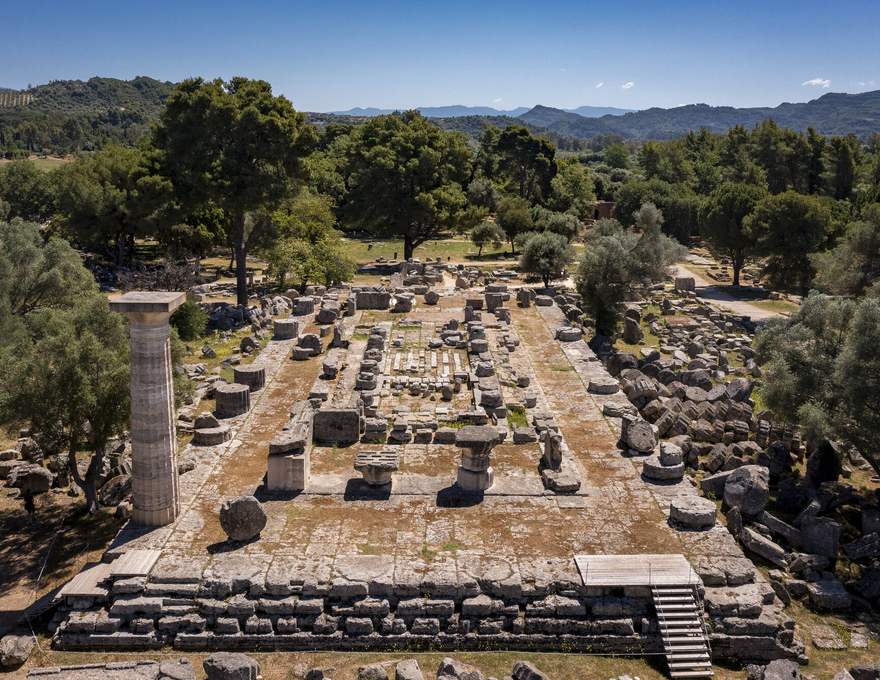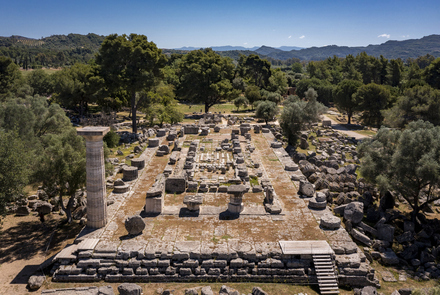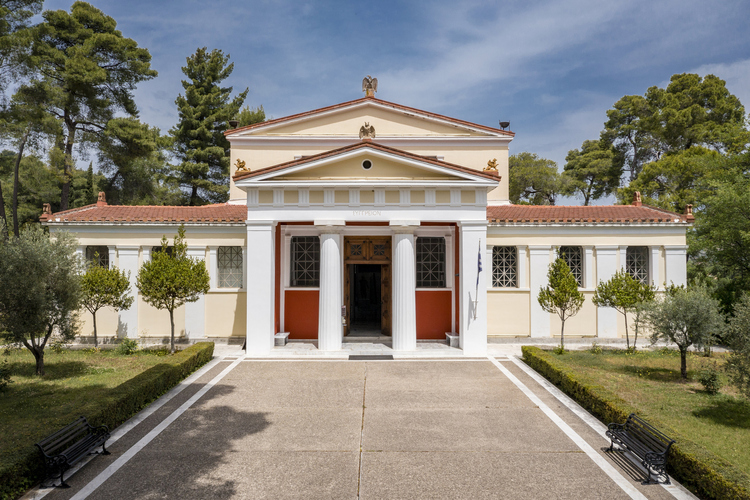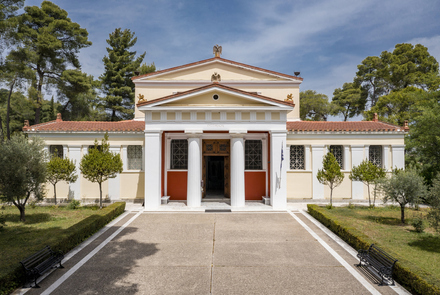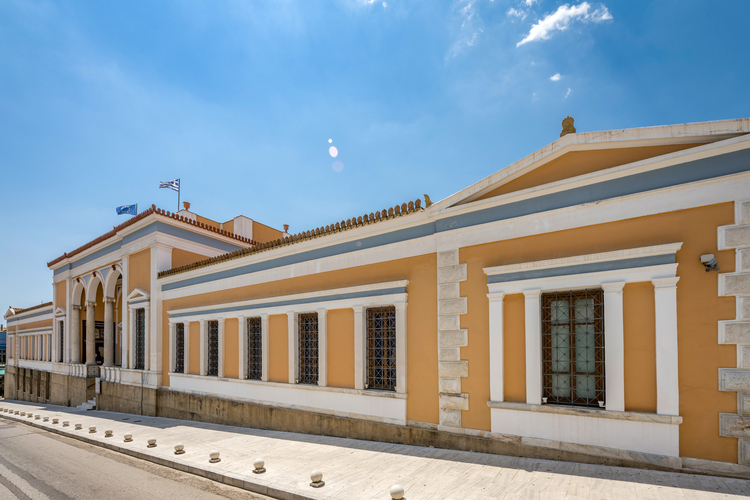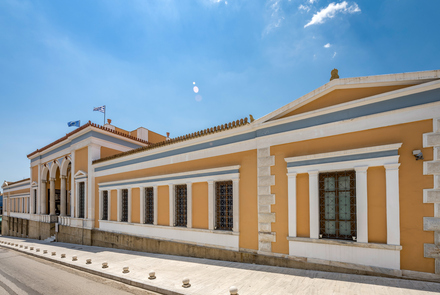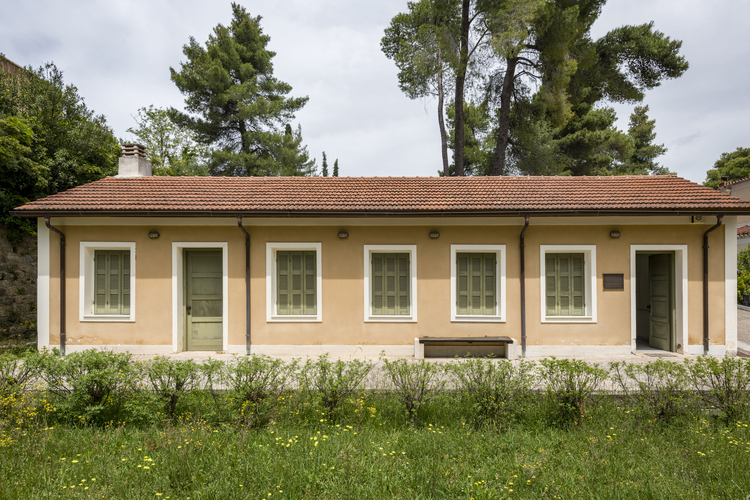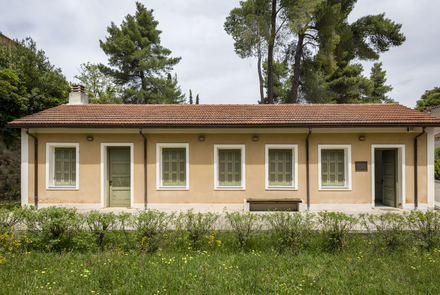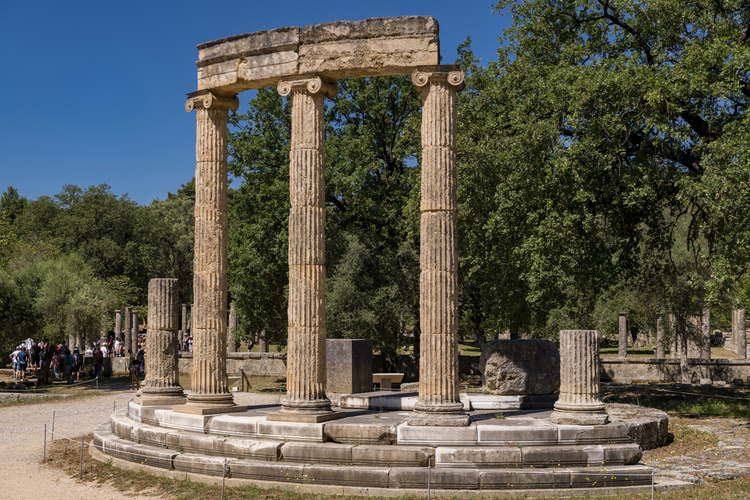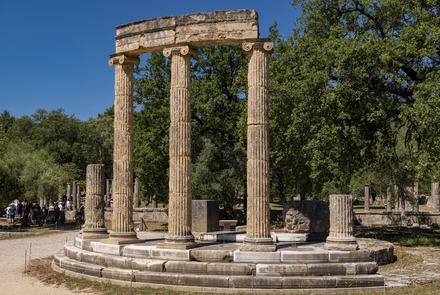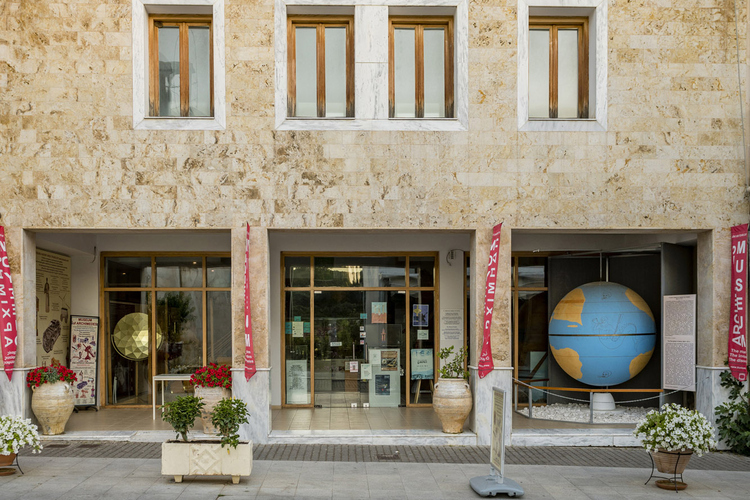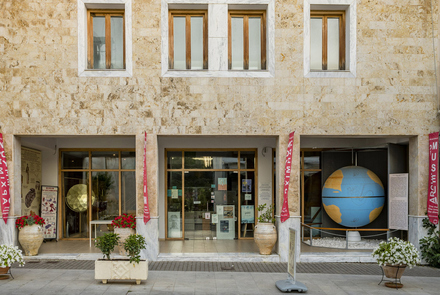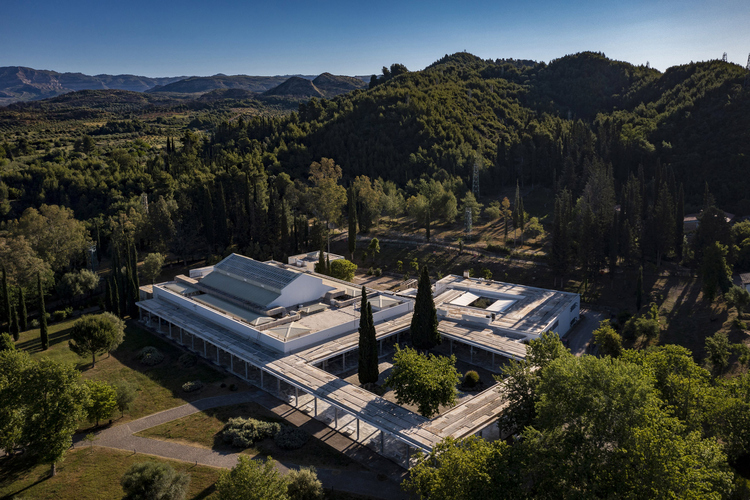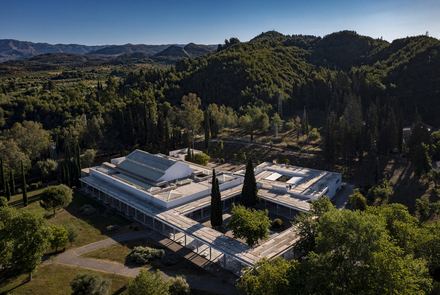The majestic temple of Zeus was erected in the prominent spot of Altis, in the heart of the sanctuary of Olympia and it stood out by the scale of the structure, its amazing art sculptured decoration, as well as for the colossal statue of the god, in whose honour the Olympic Games were held.
It was an Eleans΄ dedication to Zeus and it took about twenty years for its completion, from 470 to 456 BC. It is the work of the Elean architect Libon and it belongs to the Doric order, of which it is considered as the ‘canon’, namely the model of standard.
The peripteral temple, constituted of six columns on its narrow and thirteen on its long sides. It consists of the pronaos, the cella (sekos) and the opisthodomos. For the construction of the base and the bearing structure, was used local shelly limestone, coated with a thin layer of mortar that gave the impression of marble. The sculptured decoration of the temple, the tiled roof, and the lion's heads - waterspouts were made of marble.
In its internal the temple had two rows of two-storey colonnades, placed near the walls of the cella. In this way, three aisles were created, with the central one being twice as wide as the lateral ones.
The rich sculptural decoration of the temple, a prime example of the Severe Style of the Classical times, was preserved and it is presented restored in the Archaeological Museum of Olympia. The subject of the composition on the east pediment is the chariot race between Pelops and Oenomaus, with Zeus as the central figure. On the western pediment the sculptures narrate the conflict between Centaurs and Lapiths with Apollo as the central figure. On the metopes of the two narrow sides of the temple, the labors of Hercules, the mythical son of Zeus, are depicted in relief per six at each side. The metopes of the temple's peristasis were unadorned.
However, the element that gave unsurpassed glamor and lustre to the building was the cult statue of Zeus, placed deep in the cella of the temple. For this work, the Elean priests of Altis invited the sculptor Pheidias from Athens, who had gained great fame for having the general supervision of the reconstruction works of the Acropolis.
Pheidias worked for about ten years in Olympia, after 438 and up to 430 BC. Surpassing himself, he created a statue for the patron god of the sanctuary of Olympia, that amazed everyone, and it was considered as one of the seven wonders of the world. Even though the statue was not preserved, its detailed description, as well as the description of the entire sanctuary of Olympia, was preserved by the traveler Pausanias.
The temple of Zeus, abandoned, collapsed after the strong earthquakes in 522 and 551 AD. On this monument of Olympia focused the first excavation that was carried out in 1829 by the French scientific expedition which was later completed by the German Archaeological Institute. In the year 2005, the restoration of the Northwest column of the peristasis was completed.
Copyediting: Ephorate of Antiquities of Ilia
- Ancient Olympia P.C. 27065
- efahle@culture.gr
- 2624022742 / 2624023753
- Police Department of Ilia - P.D. Ancient Olympia - Ephorate of Antiquities of Ilia
- Summer (May - October): 08:00 a.m. - 08:00 p.m.
- Winter (November - April) : 08:30 a.m. -03:30 p.m.

